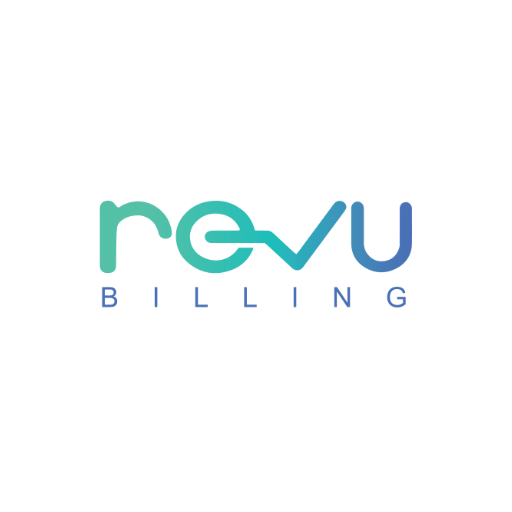Highlights of Dentists Billings Montana
As a dentist or office manager in Montana, you might think, “Oh, that’s our system to collect money!” when you hear the term “dentists billings Montana.” Indeed, there’s more to it than that. Understanding the dental billing process is crucial to the success of your dental office.
Putting your financial future on blind faith that billing is being handled properly is a bad idea. Lack of proper dental billing practices is the root reason for low collections, which every dentist should only tolerate. By reading this, you can learn about dental billing, including how dental insurance is handled.
Revu Billing has been working for a long time and has a full grip on dentists billings in Montana. As a dental billing service, we have observed that many dental offices overlook the obvious question of how this system operates.
Here, we’ll paint a detailed picture of the dental billing process. Despite its seeming ease, this procedure can be optimized to increase your dental practice’s revenue streams from patients and dental insurance claims if your team has a firm grasp on how it works.
What are Dentists Billings Montana?
Dentists Billings Montana is any practice that collects payment for dental services performed in your dental clinics.
What is Dentist Billing Process?
The dentists billings Montana process includes everything that needs to be done to get paid by patients and insurance companies for dental care. The two most important sources of income for a dental business are direct billing to patients and filing insurance claims.
You may take definite measures to efficiently complete the dentists billings Montana process, just as there are with any other process.
Listed below is a quick rundown of what has to be done when submitting a dental billing claim:
Patients’ personal information
It is gathered during the first scheduling call for a dental appointment. Information collected includes but is not limited to the subscriber’s name, phone number, address, email address, contact preferences, date of birth, employer or insurance plan name, insurance carrier, carrier’s provider phone number, and subscriber’s insurance ID number.
Verifying the information:
Once you get the patient’s name, address, and phone number, you can call the insurance provider or check your insurance site to ensure the patient is covered. You can learn the specifics of their coverage and benefit structures from this.
Entering the information
As the patient receives dental care on the day of their appointment, a member of your care team will enter the pertinent information in your clinical notes and assign appropriate procedure codes. An administrative staff member will typically verify that the provider has reviewed and electronically signed the necessary paperwork in your dental programme. Every day, a staff member should sign off on the day sheet to ensure that the information entered in the dentist’s chair matches the information on the patient’s ledger.
Sending the Insurance claim
Fourth, send your insurance claims in batches and keep track of them using the data you entered into your software. Procedure codes, patient names, addresses, insurance information, and supporting documentation will all be included in the claim. Documents such as clinical notes, x-rays, periodontal charts, narratives, primary EOBs, intraoral photographs, etc., may be included as attachments.
Follow up
Follow up on denied or unpaid claims after 30 days to get things resolved. Working on the insurance ageing report is what you need to do. Your company’s billing staff will collect a list of unpaid claims, call the insurance provider to inquire about the reason for the denial, and then file an appeal to get paid. At this stage, the biller’s competence and efficiency will determine whether you have a high collection rate and low overhead.
Billing patients
Patients can be billed for the full cost of a procedure at the time of service (service fee) or for the remaining balance after insurance has been deducted (reimbursement model). The patient’s copayment can be collected at the time of service or subsequently via mail or email with patient billing. The next step is to submit a claim to their insurance company for payment. However, as much as half of your revenue may come from accounts receivable from patients, so it is essential to collect these accounts in full.
Updating Payments
Once the insurance company has settled your claim and the funds have been placed into your bank account, you must then publish the payment to your practice management software. Doing so ensures that all of your data is recorded and accounted for. It’s the final step in the claims process and allows you to finally put an end to the whole thing. Accurate patient billing and cash flow metrics need timely posting of patient payments.
Updating Reports:
To evaluate how successful your billing actions are in securing payment for what your practice provides, you should run critical reports such as collections and account ageing reports after payments have been posted and the claim has been closed. You can view a list of unpaid claims and patient balances by running an outstanding account & insurance ageing report in your dental software.
Is Dental Billing Difficult To Learn?
It’s no secret that dentists billings Montana may be difficult. To execute a successful job, you must know how everything fits together and establish an efficient workflow. Duties like these are not something you can pick up at the weekend.
Obtaining accurate patient information is the first step in the procedure. You must also be familiar with coding and the supporting documentation required to submit a valid claim for reimbursement. Each subsequent step is dependent on the ones that came before it.
The front desk and dental billing are two of the many tasks that many dentists would like to see consolidated into the hands of a single employee. This is a surefire way to have poor receipts come in. A specialized person, group, or service is needed for insurance billing, as this type of billing necessitates efficient payment collection from insurance providers.
Dentists Billing Montana should have expert knowledge of the following:
- Regulations to ensure the effective and efficient coordination of benefits
Medicare is the law
Methods for determining a patient’s portion of the bill
Accurately calculating write-offs and recording them
Procedures that need supporting paperwork or attachments
Appeals Procedures for Rejected Claims
Modifications to the code that are currently in effect
Making sure your cash flow numbers are accurate by posting payments on time
Create reports to see what areas of your billing system require work
Tips to master Dental Billing Process:
You may be thinking, “Wow, there’s a lot more to this than I imagined!” The question is, “Where do I even start?”
Listed below are a few suggestions
Maintain an effective dental billing procedure
There are many factors to consider, and we’ve already discussed how important it is to act quickly and precisely. Take a systematic approach to bill, from client scheduling to payment processing. The financial stability of a dental business and the ability to pay employees fairly depend on accurate and timely dental billing. Reducing the time and effort spent collecting payments maximises the financial reward for all parties involved.
Fewer expenses
By looking into options for outsourcing insurance claim processing, the time-consuming and money-eating aspect of dental billing. Unfortunately, the insurance billing process is a major contributor to rising business expenses. All unresolved claims require subsequent action. This is challenging to achieve, unfortunately. Insurance companies frequently employ stalling techniques that put callers on hold for excessive amounts of time, exhausting even the most productive teams. What’s more, the industry is always evolving in ways you can’t predict
Governmental rules and guidelines
The evolution of CDT coding due to state mandates
Alterations to Insurance Coverage
Indications for the patient
Methods used by insurers to avoid paying out claims or reduce benefits
You can decide between claims, denials, codes, regulations, policy revisions, and restrictions should all be tracked regularly, or a service can do it on your behalf.
Expanding Horizon
Third, always be willing to learn more; dental billers must adapt to the ever-evolving fields of medical, insurance, no-pay strategies, and legislation. To run a successful dental practice, you must keep learning and improving. It’s wise to put money into the dental team’s education and training.
Importance of Dental Billing
After reading such detailed insights into dental billing services, your head might be spinning, but no need to worry, as Revu Billing has a team of experts providing the best dental billing services. Let’s connect and discuss how we can work together and make the experience worth remembering.




